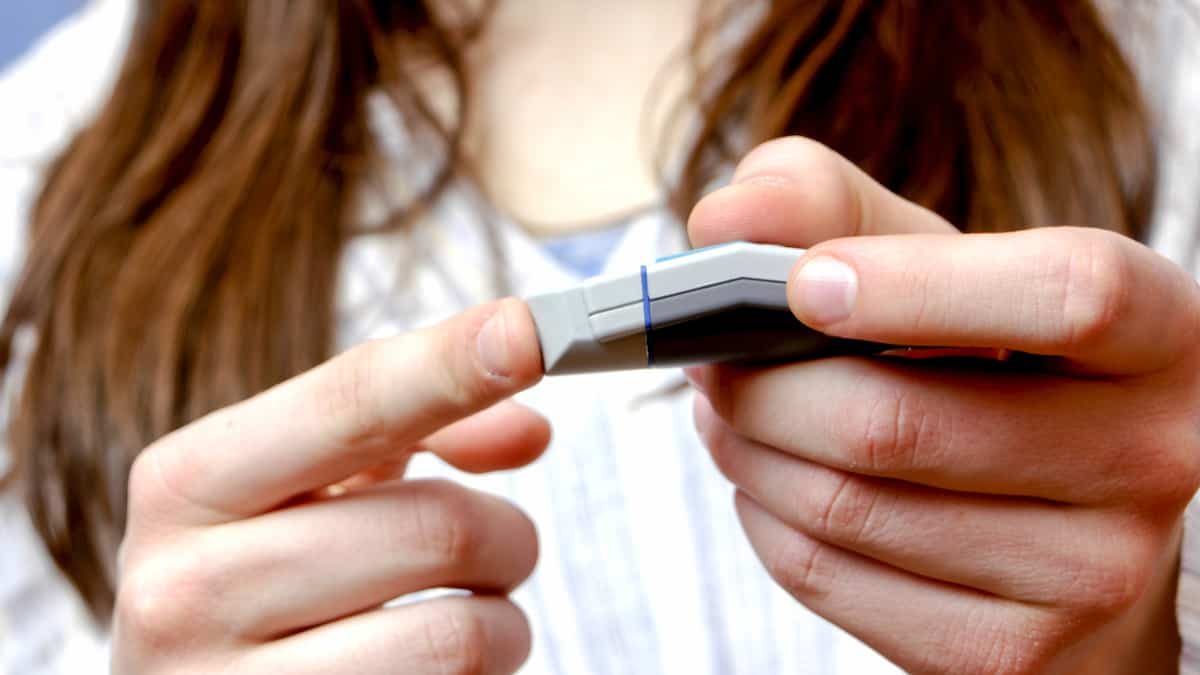Your family doctor is concerned about your rising blood sugar levels and tells you that you are now in a zone called prediabetes. He then suggests that you lose a little weight, otherwise you could develop type 2 diabetes. Is this recommendation justified? Yes, but it lacks nuance.
Inevitably, you’ll wonder how much weight to lose and how. A recent study demonstrated that remission of prediabetes was, among other things, due to a reduction in visceral adiposity and not to weight loss.(1)
Limitations of measuring weight loss
Since studies on large cohorts have shown the benefits of weight loss of at least 5% on different health indicators, this target is frequently proposed in clinical practice guidelines. However, your doctor does not treat a population, but one patient at a time!
Weight is not everything. Some people of seemingly normal weight are “fat on the inside” (visceral obesity) and are at much greater risk of developing type 2 diabetes than people whose excess body fat is subcutaneous. In the same way, a weight loss of 5% of one’s mass resulting essentially in a loss of visceral fat will have greater effects on health than a similar weight loss, but of subcutaneous fat.
Reduce visceral fat
In order to better understand this phenomenon, teams of doctors and researchers from eight clinical centers in Germany carried out a large study to prevent type 2 diabetes by targeting lifestyle, the PLIS study (Prediabetes Lifestyle Intervention Study). After being followed for a year, 298 of the 1,160 participants managed to lose at least 5% of their initial body weight.
Those whose blood sugar levels normalized (128 participants) were considered “responders” and those still with prediabetes criteria (170 participants) as “non-responders.” Interestingly, the decrease in body mass index (which is the ratio of weight in kg to height in m2) was the same in both groups.
Thus, weight loss could not predict the normalization of participants’ blood sugar levels. However, the decrease in the amount of visceral adipose tissue was greater in people who had normalized their blood sugar (responders) than in participants who still had a diagnosis of prediabetes (non-responders). Furthermore, insulin sensitivity improved more noticeably in responders compared to non-responders. Finally, the reduction in waist circumference predicted the change in status (from prediabetes to normal) better than weight loss.
Adopt an active lifestyle
What can we learn from all this on a practical level? The best way to improve insulin sensitivity is to do regular physical activity like a good brisk daily walk (which is enough to improve insulin sensitivity even after just one session!).
In addition, regular physical activity melts visceral fat and reduces waist size and thus keeps type 2 diabetes at bay. Of course, moving will not entirely compensate for a highly processed diet, rich in added sugar. , bad fat and salt, but it will make your task less arduous!
So, if your doctor diagnoses you with prediabetes, it’s time to break out the sneakers and self-prescribe the ultimate antidiabetes medication: a good daily walk. In addition, this German study confirms that it is more relevant to monitor the evolution of your waistline than weight loss. You might be surprised by the results and so will your doctor!
(1) Sandforth A et al. Mechanisms of weight loss-induced remission in people with prediabetes: a post-hoc analysis of the randomized, controlled, multicenter Prediabetes Lifestyle Intervention Study (PLIS). Lancet Diabetes Endocrinol 2023;11(11):798-810.
